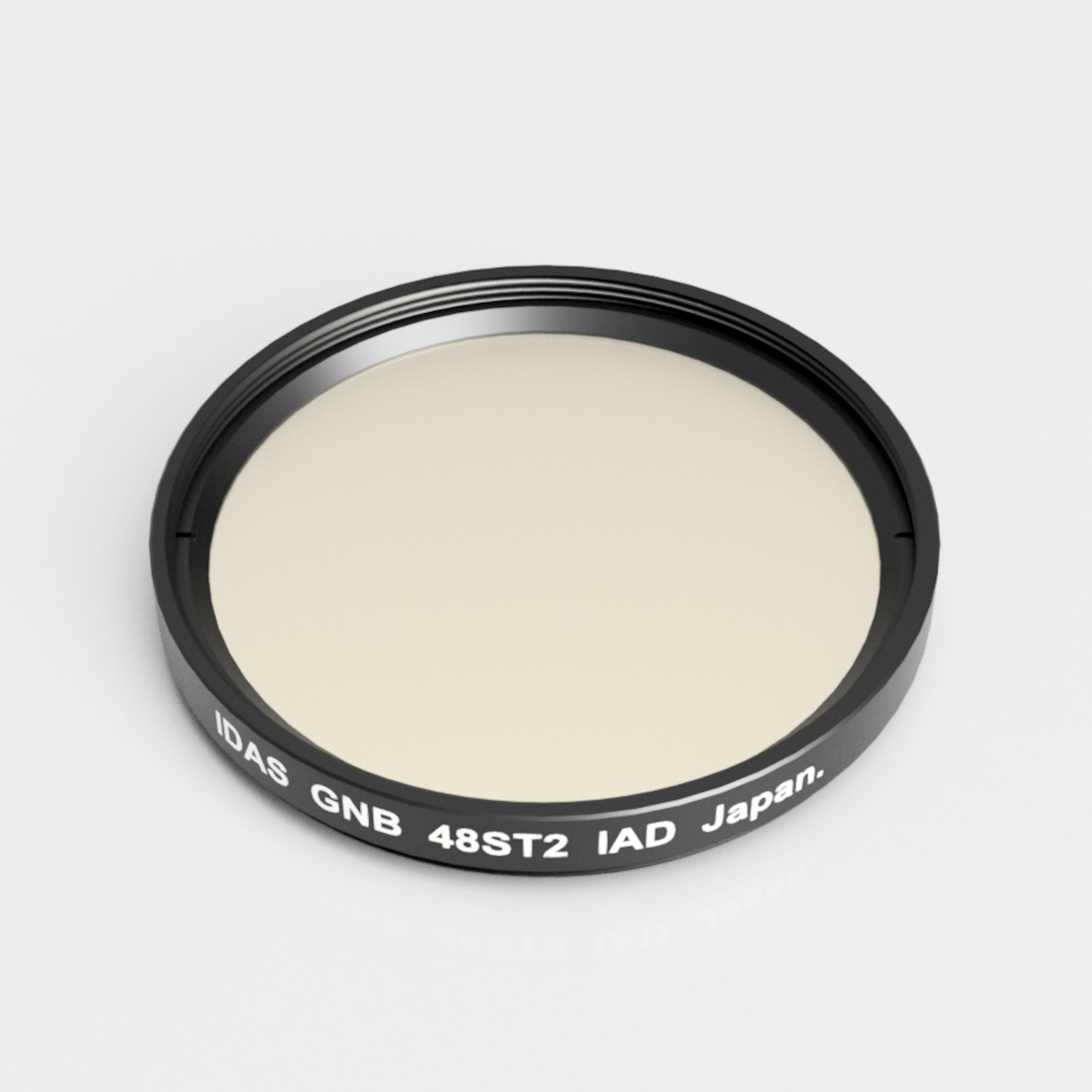【IDAS GNB 濾鏡(星系星雲增強器)】
讓星系和星雲的微弱光芒更加強烈、更加生動——IDAS
的 GNB(星系星雲增強器)濾鏡擁有針對 Hα、OIII 和 SII 等主要發射線優化的高透射波段,是一款專為拍攝星雲和星系而設計的多雲帶濾鏡。它有效減少光污染,同時突顯天體的精細結構和微弱光芒。它能夠以豐富的對比度展現星雲和星系的外觀,尤其是在城市地區和月光下。它相容於單色 CMOS 相機,是窄帶攝影初學者的理想選擇。
[特點]
・專門針對三條發射線:Hα / OIII / SII 的多窄帶設計
・強力切斷不必要的可見光和人造光
・清晰描繪星雲的結構和星系的細節
・即使在光污染區域和月夜也能實現高對比度拍攝
・日本製造,高精度光學玻璃和耐用的 AR塗層
[規格]
・螺絲直徑:M48mm
・螺距:P0.75mm
・厚度:2.0mm
・透射特性:Hα / OIII / SII 各波段的透射率高
・即使在城市地區也想清晰描繪星雲和星系的人
・第一次嘗試窄帶攝影的人
・使用單色 CMOS 相機的人
・想要避免光污染的同時描繪自然發射線的人
Feature
The IDAS GNB filter passes through the Ha and OIII regions in the same manner as of the IDAS NBZ to suppress light pollutions in the visible light regions. Unlike any other filters available in the market, the GNB at the same time passes through the near infrared region intended for shooting galaxies that cannot be shot with any comventional nebula filters. The idea of designing this filter is based on the fact that the near infrared region can be hardly affected by artifical light pollution sources.
Notes:
We recommend the use with a NIR-enhanced sensor such as IMX585 and IMX464 especially where the GNB is used in a heavly light-polluted location.
The GNB filter will enhance the colorfulness of galaxies when used with a conventional sensor (such as IMX294).
n.b. on halos:
Optical filters such as IDAS GNB and DTD utilizing infrared tend to cause haloing in the NUV and NIR regions. This is because the anti-reflection properties of off-the-shelf cameras' optical systems (oiptical window and sensor cover glass) are optimized for the visible spectrum only, not for the NIR region. Thus, haoling at the camera end in the unoptimized region becomes more apparent, coupled with haloing from the filter itself.
Here is a rough estimation of the magnitude of haoling where the haloing maginute of NBZ (NBZex) is counted as 1:
GNB + IMX294 sensor results in 8.0 times
GNB + IMX585 sensor results in 6.3 times

| *This product is an interference filter. Its spectrum characteristics will be subject to the incidence of incoming light. |
| When the GNB filter is placed between the lens and the camera: |

 |


